 |
| Heroin In Tahiti_Italian Occult Psychedelia_Fact |
A Sense of Doubt blog post #3177 - IOP - Italian Occult Psychedelia
This post has been in the works for some time.
Through reading essays by Stephen Prince in his collected editions from A Year in the Country, I learned about IOP, better known as Italian Occult Psychedelia, as I was exploring Hauntology, Hypnagogic Pop, Witchhouse, and Phantasmal music, which I have previously explored (links below).
https://en.wikipedia.org/wiki/Italian_occult_psychedelia
Italian occult psychedelia
Italian occult psychedelia (IOP) is a subgenre of Italian psychedelic music[1] characterized by obscure atmospheres. Italian occult psychedelia was coined by journalist Antonio Ciarletta in an article published by Italian music magazine Blow Up,[2] in January 2012.[3][4] A festival called Thalassa[5][6] has occurred in Rome since 2013 to celebrate Italian occult psychedelia bands.[7][8]
Characteristics[edit]
The music form has emerged as a form of hauntology, an engine of reactivation of an Italian collective memory. The features of this shared past are related to the imagery of Italian genre films as cannibal movies, spaghetti westerns, Italian B horror movies and their soundtracks, and are related also to the violent, obscure and esoteric folklore so well outlined in the essays of Ernesto De Martino and in the documentaries of Luigi Di Gianni. "The darkness of human mind and the superstitions of old religions are leit-motifs that run through Giallo films and the music of IOP bands is hardly surprising: Italy is a country bound by belief and superstitions."[9] Other references are the stories and the characters of Federico Fellini and Pier Paolo Pasolini. Musically, Italian occult psychedelia is a cross of post-punk, psychedelic rock, Italian progressive rock, Italian library music and "Mediterranean vibes."[10] According to Rumore, also other influences that "goes from Krautrock to Italian B-movie soundtracks, from drones to analog electronics, from lysergic folk to free jazz."[11] According to Joseph Stannard, "It's equally clear that Italian occult psychedelia is far from sonically homogeneous."[12] Simon Reynolds identifies Italian occult psychedelia as an Italian counterpart to hauntology.[13] [14][15]
- IOP at Rai Radio3
- SentireAscoltare IOP festival
- Distorsioni.net IOP festival third edition review
- OndaRock
- In Zaire on Il Mucchio Selvaggio
- IOP at Rai Radio3
- Fact Magazine preview IOP song
- Distorsioni.net IOP festival second edition review
- Blow Up IOP part 2
- Donato Epiro interview
- Lay Llamas on Rocket Recordings
- IOP at Rai Radio3
- Martin Hagfors interview
- IOP and Italian Indie
New Wave of Italian Occult Psychedelia
A list by MdM83
[List433533] | ![]() +106
+106
https://rateyourmusic.com/list/MdM83/new_wave_of_italian_occult_psychedelia/

https://www.pinterest.com/tantrabensko/italian-occult-psychedelia/
Sound Animal·Italian occult psychedelia has obscure atmospheres. 2012 was when the terminology arose. Thalassa Festival in Rome celebrates the genre. Hauntology reactivates Italian collective memory with cannibal movies, spaghetti westerns, Italian B horror movies and their soundtracks, esoteric dark folklore. Federico Fellini and Pier Paolo Pasolini are mascots. Post-punk, psychedelic rock, Italian prog rock, Italian library music and Mediterranean.

https://globalpsychedelia.com/2017/01/11/italian-psychedelia/
Why haven’t I done an Italian psychedelia show yet? It’s a good question, and one that I have no good answer for. Oversight? No, I’ve planned on doing an Italian Occult Psychedelia show for over a year now, with a guy named Honcho, but, you know how things go… Anyway, NOW is the time.
I’ve tried to fit three hours into a two hour show because there’s just so much great Italian psych. Sometime in the future I’ll do just a ’60s – 90’s show, and then a contemporary psych show. This one’s a taste of it all, but mostly contemporary.
Turn on. Tune in.
Le Stelle Di Mario Schifano . Le Ultime Parole Di Brandimante, Dall’orlando Furioso, Ospite Peter Hartman E Fine (Da Ascoltarsi Con TV Accesa, Senza Volume). . Dedicato . BDS . 1967

Le Orme . Ad Gloriam . Ad Gloriam . Car Juke Box . 1969
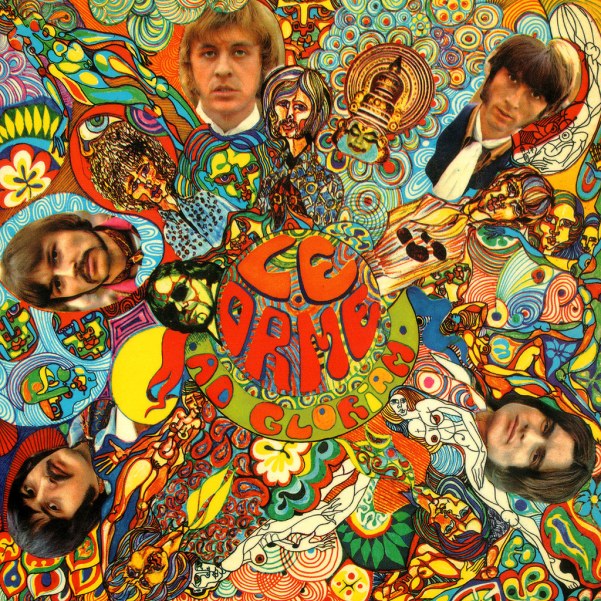
The Trip . Caronte . Caronte 1 . RCA Italiana . 1971
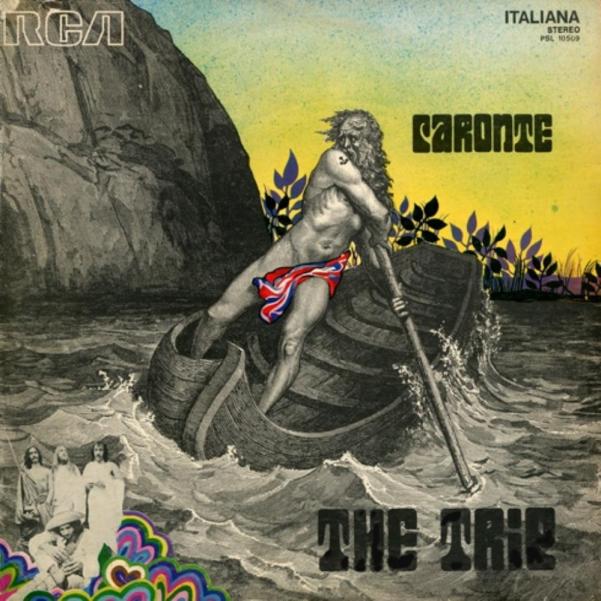
Deadpeach . 2 . Bombay . Go Down Records . 2010

Golden Cup . Vagabond . Untitled 1 . Blackest Rainbow . 2012
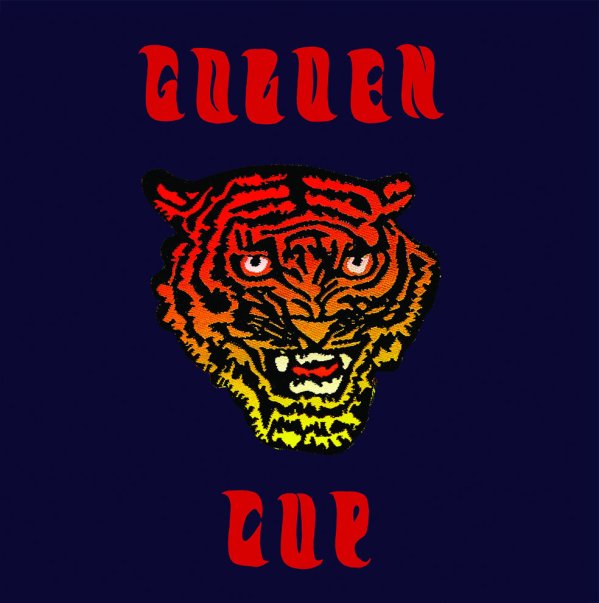
Insider . Vibrations From the Tapes . Raga In the Sky . Phonosphera Records . 2012

Herself . S/T . Here We Are . DeAmbula Records . 2012

Lay Llamas . Ostro . Ancient People of the Stars . Rocket Recordings . 2014

JuJu . JuJu . Samael . Sunrise Ocean Bender . 2016

Movie Star Junkies . Junkyears: Rarities And Farm Recordings 2005-2007 . Black Caraibi . Avant! . 2009

Jennifer Gentle . Funny Creature Lane . Couple in Bed by a Green Flashing Light . Sillyboy . 2002 [This band is FUCKING AMAZING. Got their name from Lucifer Sam on Piper at the Gates of Dawn, AND did a live album with Kawabata Makoto The Wrong Cage (2002).]

The Vickers . Ghosts . See Me Jumping On the Stars . Black Candy Records . 2014

Ufomammut . Ecate . Somnium . Neurot . 2015
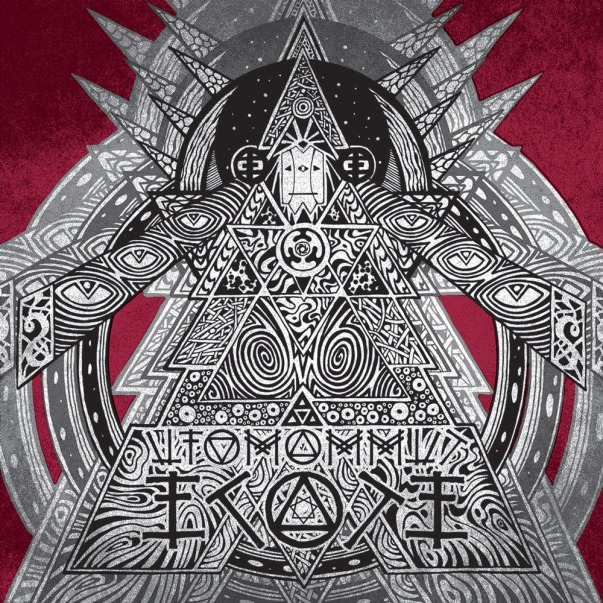
Other Italian artists to check out:
Nino Rota . Casanova [Seriously, he has to be on any Italian list. This soundtrack especially.]
Jacula . Tardo Pede In Magiam Versus [definitely going to be on the Occult Psych show]
Gli Astrali – Viaggio Allucinogeno [WTF! Awesome]
Jooklo Duo (and variants) [So fucking good. I’ve played this duo on my psych jazz show]
The Great Saunites . Green [In the midst of a series of crazy great post-rock/psych albums]
Go!Zilla – https://youtu.be/GRTSO2JDEco
Boring Machines . Heroin in Tahiti/Sun and Violence [I love this album. Check it out]
CHT – Cross Highest Trip . Vision Without Execution Is Hallucination . 2017
Italian Occult Psychedelia – new scene of post punk trip weirdness from Italy
Italian Occult Psychedelia
A new, interesting scenario is surfacing in Italian underground music: a place where records are hard to find (you almost can’t buy nothing from record shops), people wear masks (well, sometimes), vinyl spin and feelings flow during intense live sets.
This is the so-called “Italian Occult Psychedelia”, and it’s a weird Shangri-La where Sun Ra, La Monte Young, Magma, Psychic TV, Embryo, Ornette Coleman, Krautrock, Nusrat Fateh Ali Khan, Pauline Oliveros, Spacemen 3, Fela Kuti meet with middle eastern and Mediterranean vibes, mixed some of the glorious prog rock of the Italian 70s.
All the bands under this bizarre label have wide mental boundaries, spanning from Africa to Central Europe, well representing the various influences present in Italian culture, in a wider sense.
Music is hidden in a hazy shade, evocating magnetic symbols and forgotten pagan cults, while music moves in many directions, offering a different view on Italian music.
Look forward, listen forward.
Here’s a list of bands to watch out for:
Squadra Omega
link for Squadra Hydra
They say (and very loudly in capitals!) ‘SQUADRA OMEGA IS A PSYCH/AVANT/KRAUT ROCK COLLECTIVE WITH FORMER AND PRESENT MEMBERS OF THE MOJOMATICS, WITH LOVE AND BE MALEDETTO NOW! DEVOTED TO FREE IMPROVVISATION, PSYCHEDELIC JAMS AND MIND BLOW UPS. ——————————————————————————
SPACEAGE CUBIST – FREE – JAZZ CLASHES WITH PYGMY – PERCUSSIONS – NO WAVE – KRAUT ROCK CAUSING A SONIC FUSION LEADING TO A COMPLETE DERANGEMENT OF THE SENSES, AN ASSAULT ON THE FRONTAL LOBE AND PERMANENT HALLUCINATION. THIS IS MUSIC FROM THE THIRD EYE!’
We say ‘oozing tripped out and hypnotic drone rock..’
La Piramide di Sangue
Link for La Piramide di Sangue
we say ‘John Zorn jams with Swans. serious atmosphere and very mind bedding- love this’
In Zaire
we say ‘filthy guitar trips, like a meteorite cranked through high decibel wastage…’
Cannibal Movie
they say ‘Two long underground jams are the best recording of the duo. The first side takes you in a hypnotic journey to the afterlife, I like to think (even if only organ and percussion) in early Amon Düül, the darkest ambient of German Oak and surrounded by accumulated strain that doesn’t end explode, as the great recording of japanese Jacks. The other side begins more meditative and at times ethereal, until the percussion of Gaspare opens the path to a ceremony of a secret brotherhood with dissonant textures and hypnotic pulse”.
we say ‘when the weird getting going the genius soundtrack their madness…’
Eternal Zio
they say ‘experimental drone, free folk, psychedelic punk…’
we say ‘we totally agree with them!’
Mombu
we say ‘manic neo free jazz weirdness and genius skronk…’
Al Doum & The Faryds
we say ‘pure trips and atmospherics from band who understand the true nature of the psychedelic…’
How Much Wood Would A Woodchuck Chuck If A Woodchuck Could Chuck Wood
we say ‘clanging twanging dark melancholic guitars building to drone feedback climax- stunning…’
Link to How Much Wood Would A Woodchuck Chuck If A Woodchuck Could Chuck Wood
”
And these are good labels to check out also
“https://www.blacksweatrecords.com/” \n _blankBlack Sweat Records,
“https://www.boringmachines.it/” \n _blankBoring Machines,
“https://www.macinadischi.altervista.org/” \n _blankMacina Dischi,
“https://soundofcobra.tk/” \n _blankSound Of Cobra

SOUND CLOUD MIX - ongapalooza-italian-occult-psychedelia-mixtape
Ongapalooza: 10 Years Of Boring Machines, an Italian festival specialising in all things occult and psychedelia, is to be held at the Dal Verme venue in Rome from March 31-April 2 and with the festival kicking off, we have a mixtape compiled by the head of Italian label Boring Machines, Onga, for you to listen to above.
Now in its fourth edition, the festival is organised by Thalassa, which, in keeping with the mythic nature of the festival, shares its name with a primordial Greek sea goddess. The festival honours the tenth birthday this year of Boring Machines, which was started in 2006 by Onga in Treviso.
Italian Occult Psychedelia is a subgenre of Italian psychedelic music fusing disparate art forms into one esoteric package. Artists such as Heroin in Tahiti combine references to film genres and Italian literature from authors such as Federico Fellini with krautrock, Italian library music and other musical styles. Journalist Antonio Ciarletta coined the term in an article published in in Italian music magazine Blow Up in January 2012.
The mixtape features music from some of the artists who will appear at this year’s festival taking in a wide breadth of music which showcases the restless creativity of the scene. The skronking ‘Alien Blues’ by Everest Magma segues smoothly into thunderstorm in a headset ‘A Pourpouse’ by the unholy Father Murphy. You can find out more information on the festival and get tickets here. You can find a full tracklist for the mixtape below.
Italian Occult Psychedelia Mixtape
Fabio Orsi - Train To Rostov
Adamennon - Manvantara
Everest Magma - Alien Blues
Father Murphy - A pourpouse
Heroin in Tahiti - Zatlath Aithas
Fabio Orsi - Loipe 02
Maurizio Abate - Towards the Outside
Luminance Ratio - Il Mare
Von Tesla - All Cycles Lost
Mai Mai Mai - Theta
Passed - Glory (I'll Show You Light Now)
Squadra Omega - Sepolto dalle Sabbie del Tempo
Holiday Inn - Boys Work Hard
Fabio Orsi - Russian
Friday, June 10, 2016
Flesh Interface, Why is Lovecraft Still Relevant?, Italian Occult Psychedelia
Italian Occult Psychedelia - Simon Reynolds
http://blissout.blogspot.com/2012/01/why-so-glum-chums-interesting-piece-by.html
"my brain thinks bloglike"
Monday, January 30, 2012
^^^^^^^^^^^^^^^
talking of dark things, Valerio Mattioli, who writes for LaRepubblica tells me that there is an Italian counterpart to hauntology that was recently covered as part of an article in Blow Up (sort of Italy's The Wire) on contemporary Italian occult psychedelia. The journalist Antonio Ciarletta, says Mattioli, enumerates its ingredients as: "local folklore, the popular spaghetti cinema of the 60s/70s (especially mondo movies, giallo, spaghetti westerns, cannibal movies etc), even Catholicism, and a typical 'Italian vibe' all around.... Many of the musicians openly mention composers such as Piero Umiliani, Ennio Morricone and basically the whole Italian soundtracks/library music school".
"To me," continues Mattioli, "what’s interesting in these bands, is that their kind of hauntology avoids the eerie and pastoral feeling of the English counterpart, as well as the pop-cheesy attitude of the American hypnagogic pop. On the contrary, their music is blatantly dark, esoteric and sometimes bloody, actually reflecting the 'sun & violence' culture which – despite the clichés – is a commonplace here. Of course, there’s the homage to a popular imagery which is deeply rooted here, and that somehow reflects the Italian identity better than your typical Venice postcard. But it’s also like saying that memories often can be nightmares, especially if you live in a country which is half Europe/half... well, Italy. Kind of Sergio Leone/Lucio Fulci induced nostalgia...
"When you go back with your memories to the contemporary Italian golden age – to say, the 60s of the Dolce Vita etc – you can’t escape the ghosts of that same era: terrorism, urban favelas, corruption and so on. Even the big masterpieces of the Italian literature, TV and cinema typically deal with such atmospheres - they're always bloody, violent, excessive. Somehow, the bands analyzed by Ciarletta are here to remind us that the Italian good old days (when future seemed possible) were a very depressed place, and that the present is filled with those ghosts.
"It also comes quite natural to understand this trend as a reflection of the current feelings among many Italians: we perceive our country as a declining glory with no future at all; and economic crisis, crime and political warfare create a sort of Late Empire atmosphere..."
Bands operating in this zone include Cannibal Movie, Donato Epiro, In Zaire, Orfanado, Spettro Family, Heroin In Tahiti [Mattioli's own band], and on the "more 'pagan-catholic folklore' tip", Mamuthones and Father Murphy . TheAwayTeam/Polysick are "a sort of modern Piero Umiliani" with projects lined up for 100% Silk, and Planet Mu. "Needless to say: all these artists form a sort of family, they’re all friends and do stuff together, they share projects and labels etc."
An example of what Mattioli dubs "Mondo-cannibals":
Mattioli calls this sub-category "spaghetti wastelands" (love it!)
This is an example of "Italian gothic":
(Spettro is Italian for "spectres", right?)
"Exotic libraries":
~~~ THEAWAYTEAM - TWILIGHT: DRUMS IN THE FOREST ~~~ from AAVV on Vimeo.
DONATO EPIRO - La Vita Acquatica from Planeta on Vimeo.
"Bloody folklore":
and this is Father Murphy, who I saw in Pistoia last year

A Definition of Hauntology – Its Recurring Themes and its Confluence and Intertwining with Otherly Folk: Wanderings 7/26
I’ve published various versions of loose definitions of hauntology online before and considerations of how it interconnects with otherly / wyrd folk culture but not for a while and thought it might be good to revisit such things via a revised version that draws from previous related posts, writing in the A Year In The Country books and the Folk Horror Revival: Urban Wyrd – 1. Spirits of Time book etc.
Although it is hard to precisely define what hauntology is, it has come to be used as a way of identifying particular strands of music and cultural tendencies. As a cultural category it is fluid and not strictly delineated, but below are some of the recurring themes and characteristics of hauntological work:
1. Music and culture that draws from and examines a sense of loss, yearning or nostalgia for a post-war utopian, progressive, modernist future that was never quite reached, which is often accompanied by a sense of lingering Cold War dread.
2. A tendency to see some kind of unsettledness and hidden layers of meaning in previous decades’ public information films, TV idents and young adult orientated British television drama programmes from the late 1960s until approximately the early 1980s which had surprisingly complex and/or dark themes and atmospheres, particularly considered their intended audience, and that includes the likes of The Owl Service (1969-1970), Children of the Stones (1977) and The Changes (1975).
3. Graphic design and a particular kind of more-often-than-not electronic, often analogue synthesiser-based and/or previous period-orientated music that references and reinterprets some forms of older culture and related artifacts, often focusing on the period from approximately the mid-1960s to 1979 (or at times the very early 1980s) (Footnote 1) and generally of British origin.
Such reference points include previous decades’ library music (i.e. music created for industry use in films, television, adverts etc. rather than for public sale); the electronic music innovations of the BBC Radiophonic Workshop; educational materials and book cover artwork including period school text books; Pelican non-fiction titles which tended to have a distinctive aesthetic that combined functionality and a sense of idealism; and the stark sometimes seemingly almost accidentally darkly-hued designs of the Penguin Modern Poets books of the 1960s and 70s, which often featured minimalist, heavily-posterised images of nature.
4. A reimagining and misremembering of the above, and other, sources to create forms of music and culture that seem familiar, comforting and also often unsettling and not a little eerie; work that is accompanied by a sense of being haunted by spectres of its, and our, cultural past, to loosely paraphrase philosopher Jacques Derrida who coined the phrase and created the original concept of hauntology. (Footnote 2)
5. The use and foregrounding of recording medium noise and imperfections, such as the crackle and hiss of vinyl, tape wobble and so on that calls attention to the decaying nature of older analogue mediums and which can be used to create a sense of time out of joint and edge memories of previous eras.
6. The drawing together and utilising of the above elements to conjure a sense of an often strange, parallel or imagined world, or “Midwichian” (Footnote 3) Britain.
Hauntology is often, but not exclusively, used to refer to British culture and music, and it is thought to have been first used in relation to this by the writers Marks Fisher and Simon Reynolds to describe a loose cultural grouping of music and attendant culture which began to coalesce in the UK around the early mid-2000s.
As a loose genre, hauntology has retained a fair degree of cultural and aesthetic diversity that takes in the eldritch educationalism of some Ghost Box Records’ releases, the playful psychedelic whimsy and break beats of Blank Workshop / Moon Wiring Club and the darkly humorous reinterpretations of period official warning posters of Scarfolk amongst others.
However, the term has also been used more widely to describe the likes of American hypnagogic pop and Italian Occult Psychedelia; musical subgenres which also reimagine and create spectral echoes of the past but which tend to utilise as their source material or inspiration, different areas and sometimes eras of culture.
A further recurring theme that at times occurs within and/or is interconnected with hauntology is what may initially appear to be a curious and disparate occurrence and which it may be helpful to add some background and explanation to; the ways in which in several areas of music and culture, folk music and rural and folkloric-orientated work, of the underground, acid, psych, wyrd (Footnote 4) and otherly variety, has come to share common ground with hauntological work, in particular synthesised electronica of a leftfield hauntological variety.
This is an area of culture where the use, appreciation and romance of often older electronic music technologies, reference points and inspirations segues and intertwines with the more bucolic wanderings and landscapes of exploratory, otherly pastoralism and folk culture. This has become a part of the cultural landscape, which in the words of author, artist, musician and curator Kristen Gallerneaux, is:
“planted permanently somewhere between the history of the first transistor, the paranormal, and nature-driven worlds of the folkloric…”
On the surface such folkloric and spectral electronic musical and cultural forms are very disparate and yet both have come to explore and share similar landscapes. What may be one of the underlying linking points with both otherly folk etc and hauntology, is a yearning for lost utopias. Thus, in more otherly folkloric-orientated culture this is possibly related to a yearning for lost Arcadian idylls, whilst in hauntological culture it may be connected to the previously mentioned yearning for lost progressive post-war futures that never fully came to fruition.
Both of these intertwined areas of music and culture have revered relics; for otherly folkloric work these may include those from that lost idyll which are spectrally imprinted with some form of loss, such as, in the words of Rob Young, “old buildings, texts, songs, etc, [which] are like talismans to be treasured, as a connective chain to the past.” (Quoted from Electric Eden: Unearthing Britain’s Visionary Music written by Rob Young, 2011.)
Hauntological talismans may also include items from those referred to above: TV idents from previous decades, public information films and television series from the late 1960s to late 1970s which have gained unsettledness and hidden layers of meaning with the passing of time – alongside the likes of the BBC Radiophonic Workshop and Brutalist architecture – and which also are considered to contain spectral echoes in reference to the aforementioned lost progressive futures.
These two strands of otherly folkloric and hauntological work and culture may appear at first to be cultural cuckoos in the same nest and/or strange bedfellows. However, they have come to be seen as fellow travellers who rather than being divided by differing surface aesthetics are drawn together by a similarly exploratory and often visionary or utopian spirit, and which respectively shadow and inform one another’s journeys within an alternative cultural landscape.
Footnotes:
- This period of the mid-1960s to the later 1970s may be chosen as significant for hauntologically-related work for a number of reasons, such as during this time the optimism and, at times, utopian ideals of the immediate post-war years to the 1960s tipped over in Britain into a period of social, political, economic strife and conflict. The later 1970s, and 1979 in particular, when Margaret Thatcher’s right-leaning government was elected, is often considered to be a defining point when society began to move towards a more neoliberal, individualistic and monetarist stance, and so has come to be associated with the yearning for lost post-war progressive futures that are referred to above. Also this period is when many of those creating, or interested in, hauntological work were born, or had their formative years. As such, culture from this era from which hauntological work often draws, has a pre-existing resonance. Aside from its sometimes inherent oddness, such culture may also be seen as being imbued with an antediluvian quality – broadcasts, remnants or echoes from an “other” time and the abovementioned progressive lost futures. Sometimes in hauntological work the early 1980s will also be referenced, which may in part be due to this being a transitional or liminal time in relation to changes in society.
- Hauntology is a portmanteau or blending of the meanings of two words; “haunt” and “ontology”. Ontology is the philosophical study of “being”, which focuses on abstract questions such as whether there is such a thing as objective reality and what kinds of things or entities exist in the universe. Ontology is sometimes associated with foundationalist thinkers who believe that: “to arrive at truth it is necessary to start with the most fundamental issues – to be sure about the foundations of philosophy – and then work our way up from there to more specific questions.” (Quoted from the philosophyterms.com website.)
- “Midwichian” is used to imply a sense of a conventional, comfortable, sometimes bucolic places and society where something untoward, quietly unsettling and possibly unexplained has happened or lurks semi-hidden beneath the surface of things. It derives from John Wyndham’s book The Midwich Cuckoos (1957) and the subsequent film adaptation Village of the Damned (1960) in which a pleasant rural village existence is severely disrupted by a preternatural stealthy and surreptitious alien invasion.
- The word wyrd in this context and elsewhere in the book is used to imply variously an eldritch, uncanny, weird, eerie, unsettling etc sense of rural and folk orientated culture.
Elsewhere:
- Marks Fisher’s Ghosts of My Life
- Simon Reynold’s blissblog
- Simon Reynold’s Retromania blog
- Folk Horror Revival: Urban Wyrd – 1. Spirits of Time
- Rob Young’s Electric Eden site
- Jonny Trunk’s The Music Library book
- Ghost Box Records
- Blank Workshop / Moon Wiring Club
- Scarfolk
- Kristen Gallerneaux’s site
Elsewhere at A Year In The Country:
- Hauntology, places where society goes to dream, the deletion of spectres and the making of an ungenre
- A Lineage of Spectres Part 1 – From Hauntology to Hypnagogic Pop
- A Lineage of Spectres Part 2 – Hauntology, Hypnagogic Pop, Synthwave and the Creation of Mystical Half-Hidden Worlds
- Rouge’s Foam – Hauntology: The Past Inside The Present and an awareness that the ghosts will always win
- 14 tracks – “Hauntology: A peculiar sonic fiction”
- The jump cuts of hauntological antecedents…
- Spectres vs Retro
- Mark Fisher’s Ghosts Of My Life and a very particular mourning and melancholia for a future’s past…
+++++++++++++++++++++++++++++++++++++++++++++++++++++++++++++++++++++++
+++++++++++++++++++++++++++++++++++++++++++++++++++++++++++++++++++++++
+++++++++++++++++++++++++++++++++++++++++++++++++++++++++++++++++++++++
- Bloggery committed by chris tower - 2310.30 - 10:10
- Days ago = 3041 days ago
- New note - On 1807.06, I ceased daily transmission of my Hey Mom feature after three years of daily conversations. I plan to continue Hey Mom posts at least twice per week but will continue to post the days since ("Days Ago") count on my blog each day. The blog entry numbering in the title has changed to reflect total Sense of Doubt posts since I began the blog on 0705.04, which include Hey Mom posts, Daily Bowie posts, and Sense of Doubt posts. Hey Mom posts will still be numbered sequentially. New Hey Mom posts will use the same format as all the other Hey Mom posts; all other posts will feature this format seen here.










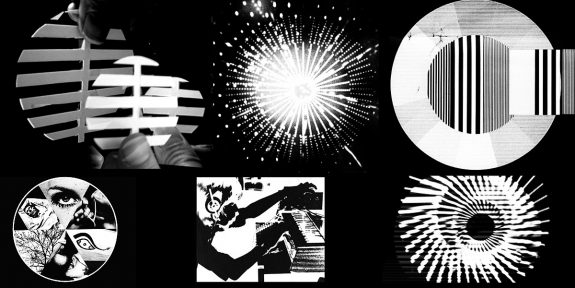
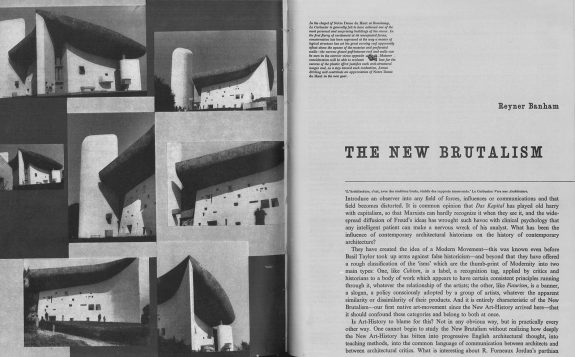
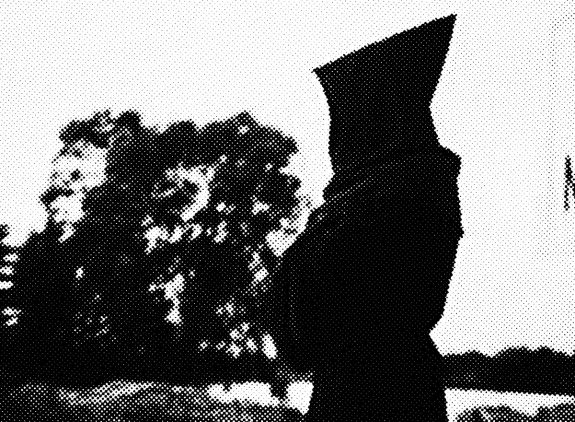

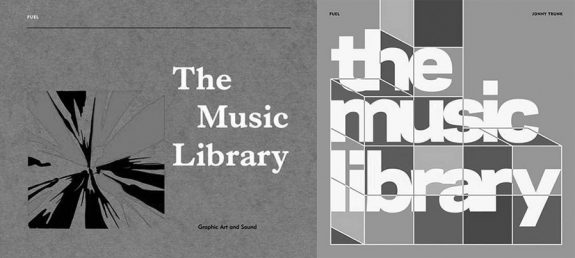


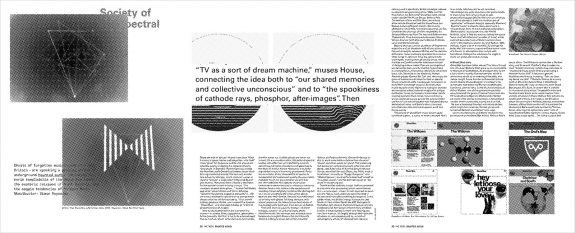





No comments:
Post a Comment